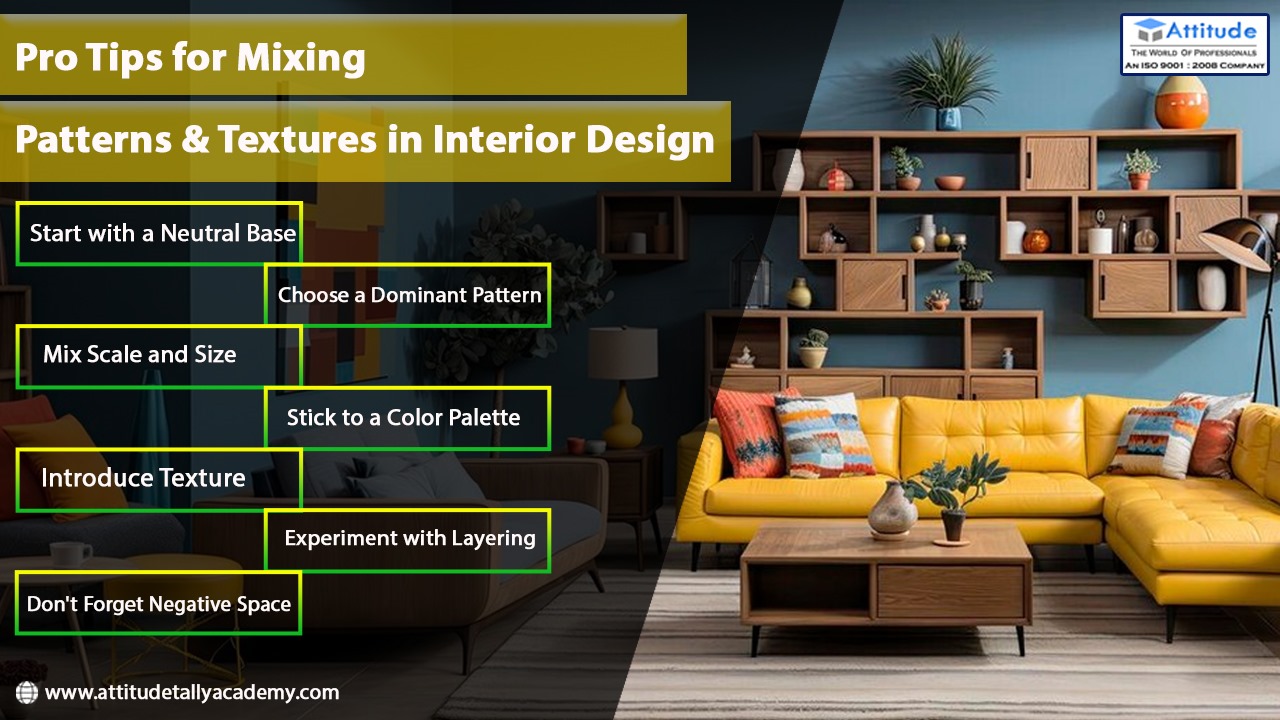Introduction
Are you looking to elevate your interior design game? Interior design pattern ideas and textures is a powerful technique that can add depth, personality, and visual interest to any space. Whether you’re designing a cozy living room or revamping your office environment, mastering the art of pattern and texture mixing can transform your space from ordinary to extraordinary. In this blog, we’ll explore some pro tips to help you achieve stunning results.
Start with a Neutral Base
Begin by establishing a neutral base for your design. This could be a neutral-colored wall, floor, or large furniture piece. Neutrals provide a calm foundation that allows other elements to shine without overwhelming the space.
Choose a Dominant Pattern
Select a dominant pattern that will be the focal point of your design. This could be a bold geometric print, a classic stripe, or a nature-inspired motif. The key is to choose a pattern that reflects your style and sets the tone for the room.
Mix Scale and Size
Don’t be afraid to mix different scales and sizes of patterns. Pair large-scale patterns with smaller ones to create contrast and visual excitement. This dynamic mix adds depth and dimension to your design.
Stick to a Color Palette
Maintain cohesiveness by sticking to a cohesive color palette. Choose colors that complement each other and work harmoniously within the space. A well-chosen color scheme ties the patterns and textures together seamlessly.
Introduce Texture
Texture is a game-changer in interior design. Incorporate tactile elements such as plush fabrics, rough textures, and glossy finishes to add richness and tactile appeal. Texture enhances the visual and sensory experience of a room.
Experiment with Layering
Layering is another technique to add complexity and interest. Mix and match different textures and patterns through pillows, throws, rugs, and artwork. Layering creates depth and invites exploration in your design.
Don’t Forget Negative Space
Negative space, or empty space, is as important as the elements in your design. Allow breathing room between furniture pieces and avoid overcrowding with patterns and textures. Negative space helps balance the visual composition and prevents the space from feeling overwhelming.
In conclusion,
Mastering the art of mixing patterns and textures can elevate your interior design to new heights. By starting with a neutral base, choosing a dominant pattern, mixing scale and size, sticking to a color palette, introducing texture, experimenting with layering, and respecting negative space, you can create a visually stunning and harmonious space that reflects your unique style.
For more interior design texture tips and pattern ideas, stay tuned to our blog for regular updates and inspiration. Happy designing!
Suggested Link: –




